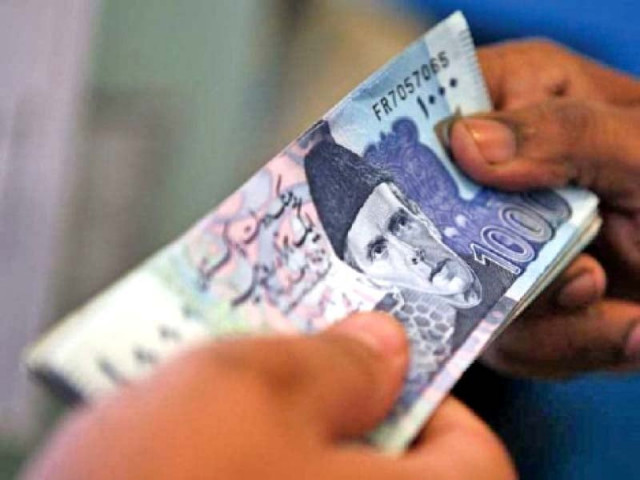Dealing with depreciation
To prevent rupee fall, high foreign capital inflows and productive capacity needed

In recent weeks, the exchange value of the rupee has depreciated sharply. Between June 30, 2021 and October 31, 2021, the currency lost its value by 14.33 percentage points relative to the US dollar (from 157.31 to 171.64) in the inter-bank market, as negotiations with the International Monetary Fund (IMF) for the resumption of $6 billion loan package hit a snag and the current account deficit continued to soar.
Despite the $4 billion Saudi Arabian assistance package, the rupee fell to 174.10 per dollar on October 28 before making a slight recovery.
A section of society has come down hard on the government for the sharp depreciation of the exchange rate. In particular, the SBP governor has drawn fire for stating that the loss in the rupee value would benefit Pakistani diaspora living in different parts of the world.
What are the causes of the domestic currency’s depreciation? And what different recipes are available?
The exchange rate is determined, just like prices of two or more commodities, by the relative demand and supply of domestic and foreign currencies. If the demand for a foreign currency, such as the US dollar, exceeds its supply, it will appreciate, which means that the domestic currency will depreciate.If a country imports more than it exports, its demand for a foreign currency will exceed the supply thereof and thus the domestic currency will tend to depreciate. The result will be similar if capital outflows exceed capital inflows.
Hence, when an economy is facing an adverse balance of payments, it is likely to have a weak exchange rate position, ie its currency will depreciate.
As Pakistan persistently runs a current account deficit, the rupee continually slides in the foreign exchange market. An exception to the rule was the three-year period approximately between FY15 and FY17 when despite the high current account deficit, the rupee exhibited relative stability.
When despite running a high current account deficit, an economy’s exchange rate remains relatively stable, it can easily be concluded that the domestic currency is overvalued.
An overvalued domestic currency makes exports expensive and imports cheaper, thus stoking the current account deficit.
In a managed floating exchange rate system, which Pakistan like most other economies has, the only way to keep the domestic currency stable is to pump foreign currencies into the market. However, the sale of foreign currencies is at the expense of running down an economy’s foreign exchange reserves.
It is only a matter of time when in view of the depleting foreign exchange reserves, it is no longer possible for the central bank to keep an overvalued exchange rate. As a result, the domestic currency loses its value drastically. This is what happened in Pakistan after the three-year rupee stability period.
SBP data
The depreciation acts as a self-correcting mechanism, which tends to make exports cheaper and imports expensive. This helps reduce the trade deficit.
The actual impact on trade balance is contingent upon relative price elasticity of exports and imports.
An overvalued currency does not allow the self-correcting mechanism to work with the result that a high current account deficit is accompanied by an overvalued exchange rate, which is a weird combination.
Let us now return to the recent depreciation of the rupee. During the first two quarters of FY21, the current account remained in surplus at $865 million and $382 million respectively due to high remittances and lower import growth.
However, as the economic growth accelerated and imports increased, in the third quarter of FY21, the current account was back into deficit, at $617 million, despite high remittances. In the fourth quarter, the deficit increased to $2.55 billion. As a result, FY21 closed with overall current account deficit of $1.91 billion.
During the first quarter of current fiscal year (FY22), $3.4 billion in current account deficit was recorded, underpinned by $10.95 billion in trade (including both goods and services) deficit compared with $5.28 billion trade deficit recorded during the first quarter of FY21.
Although, as per SBP data, exports recorded a healthy year-on-year growth of 35.2% during Q1FY22, imports went up even higher by 64.3%.
Tools to curb rupee fall
Different tools are available to the central bank and the federal government to check the rupee slide.
These include administrative measures, such as restricting the purchase of foreign currencies, particularly the US dollar, in the open market; increasing cash margin requirement for imports (depositing cash in foreign currency in advance with the bank as a particular percentage of total value of import transaction); clamping regulatory duties on imports to check their growth; pumping hard foreign currency into the market; and increasing interest rates to attract investment into rupee-denominated assets.
However, these measures are either of little consequence or have their adverse effects as well.
Increasing the cash margin requirement for imports will slow down imports of capital and intermediate goods, which will hit economic growth hard.
Increasing interest rates or imposing regulatory duties will stoke inflationary pressures and increase the cost of doing business.
Pumping foreign currencies will deplete foreign exchange reserves. The falling foreign exchange reserves will constrain the central bank’s ability to carry out open market operations.
The weakening forex position will also send out a negative signal to the market, generating speculation that the rupee would go down further. As a result, the demand for hard currencies would go up.
Administrative measures would create an acute shortage of hard foreign currencies in the market, leading to their under-the-counter trading at a much higher conversion rate.
What is needed to prevent further depreciation of the rupee is substantial net foreign capital inflows (export receipts, FDI, foreign aid), which must be greater than capital outflows. This will increase supply of foreign currencies and convey a positive signal to the market, thus reducing speculation.
As any increase in export receipts is likely to be offset by increased import payments, a hefty external assistance, such as resumption of the multibillion-dollar IMF programme, seems to be the inevitable recipe.
However, foreign assistance, bilateral or multilateral, will offer only a temporary respite.
To prevent sharp depreciation of the rupee on a long-term basis, it is imperative to shore up the productive capacity of the economy, otherwise even a moderately high growth rate will continue to cause a high current account deficit and consequently sharp exchange rate depreciation.
The writer is an Islamabad-based columnist
Published in The Express Tribune, November 15th, 2021.
Like Business on Facebook, follow @TribuneBiz on Twitter to stay informed and join in the conversation.



















COMMENTS
Comments are moderated and generally will be posted if they are on-topic and not abusive.
For more information, please see our Comments FAQ